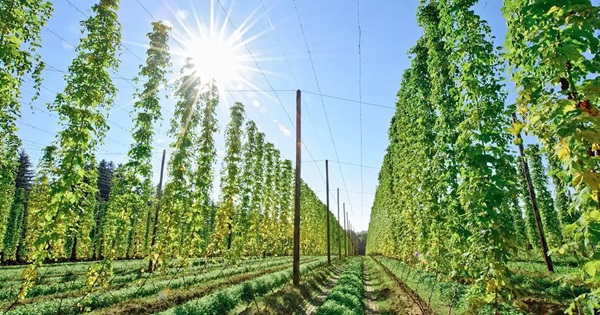A comprehensive new resource for beer enthusiasts, The Beer Tasting Practical Guide: How to Truly Appreciate Any Beer in the World, is now available for readers and listeners worldwide.
Hop production in Brazil is reaching a turning point thanks to the advancement of clean technologies applied to its processing.
From regulatory, technical elaboration, chemical composition, or organoleptic profile, understanding this distinction is fundamental to properly valuing this beverage that has gained relevance in recent years.
Pliny the Elder is not just a beer; it is a living legend of the American craft beer movement and an absolute benchmark for the Double IPA style, coveted and studied by brewers and enthusiasts worldwide.
The term “hop burps” is commonly used to describe a peculiar phenomenon of rapid and frequent burps experienced after consuming beers with a high hop content.
The beverage, named “Ocho punto ocho” (8.8), combines the characteristic flavor of the terremoto with a different nutritional profile, standing out for its lower sugar content and half the calories compared to the homemade version.
The craft beer sector in Argentina is undergoing a transformation marked by a sharp decline in consumption, shifts in consumer preferences, and a challenging economic context.
In a context of growing climate urgency and regulatory pressure, the brewing industry—traditionally seen as a resource-intensive activity—is undergoing an unprecedented transformation toward sustainability.
Does regular beer consumption affect the development of prostate diseases such as benign prostatic hyperplasia (BPH) or prostate cancer? Could there be any positive effect on prostate tissue from moderate beer consumption?
Zythos Media, the independent publisher behind the book “Practical Guide to Beer Tasting. How to Properly Appreciate All Beers of the World”, originally published in Spanish, announces its new editions now available in Portuguese and Italian.
In today’s digital landscape where data drives daily operations and innovation, implementing robust backup practices is critical to ensuring business continuity and operational efficiency.
The legend of the Russian Imperial Stout style tells that the future Tsar of Russia, Peter the Great, was captivated by Porter-style beers during a visit to England in the late 17th century.











